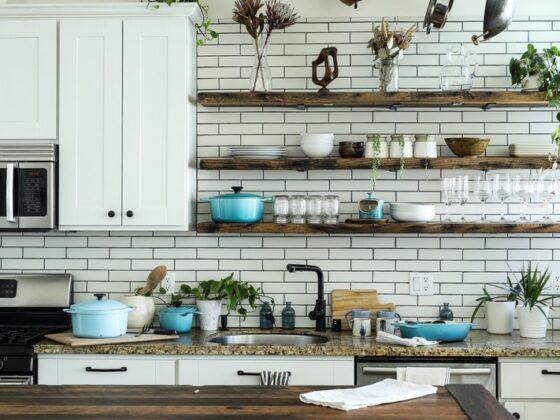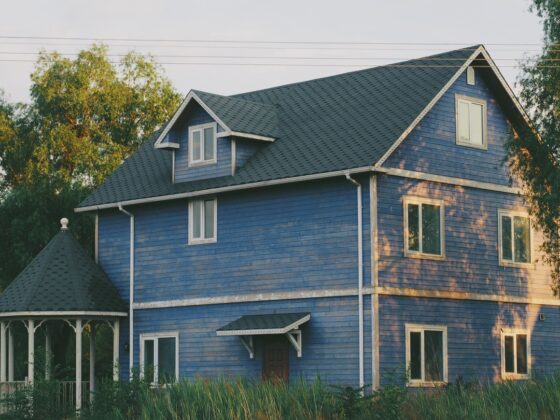Having a clean and spotless kitchen floor is essential for maintaining a hygienic and welcoming home. However, even with regular cleaning, stubborn stains can sometimes appear, leaving you scratching your head about the best way to remove them. Fear not! In this guide, we will explore some effective methods to tackle those pesky stains and restore the shine to your kitchen floor.
Identifying the Stains

Different types of stains require different cleaning methods and products, so it is important to know what you are dealing with before you start scrubbing. Here are some tips on how to identify common stains on your kitchen floor:
- Food and beverage spills: These are usually easy to spot, as they often have a distinct colour and smell. For example, coffee stains are brown, wine stains are red, and milk stains are white. However, some food and beverage spills may not be visible right away, such as oil or grease, which can leave a dark or sticky residue on the floor. To identify these stains, you can use a paper towel or a cotton swab to dab the area and see if any oil or grease transfers to the paper or cotton.
- Grease and oil stains: These are caused by cooking, frying, or spilling oily or greasy substances on the floor. They can make the floor slippery and attract dirt and dust. Grease and oil stains are usually darker than the surrounding floor, and they may have a shiny or wet appearance. They can also be identified by their texture, as they feel greasy or oily to the touch.
- Ink or marker stains: These are caused by writing, drawing, or spilling ink or marker on the floor. They can be very difficult to remove, as they can penetrate deep into the floor surface. Ink or marker stains are usually black, blue, or red, and they have a sharp or defined shape. They can also be identified by their smell, as they may have a chemical or solvent odour.
- Hard water stains: These are caused by minerals in the water that leave behind a white or grey film or crust on the floor. They can occur when water evaporates from the floor after cleaning or spilling, or when water splashes from the sink or faucet. Hard water stains are usually dull and chalky, and they have a rough or gritty texture. They can also be identified by their location, as they tend to form around water sources or drains.
The Cleaning Arsenal
Having a well-stocked cleaning arsenal can save you time, money, and effort when dealing with different types of stains. Here are some of the essential items you should have in your cleaning arsenal:
- A vacuum cleaner or a broom and dustpan: These are useful for removing loose dirt, dust, and debris from your floor before applying any cleaning solution. This can prevent scratching or spreading the stain further.
- A plunger: This is a handy tool for removing stains caused by food and beverage spills, grease and oil, or hard water. A plunger can create suction and pressure that can break down and lift the stain from the floor surface. You can use a plunger with water or a cleaning solution, depending on the type of stain.
- A hairdryer: This is a helpful tool for removing stains caused by ink or marker, as well as some food and beverage spills. A hairdryer can heat up and dissolve the stain molecules, making them easier to wipe off. You can use a hairdryer with a paper towel or a cloth, depending on the type of stain.
- A scouring pad: This is a useful tool for removing stains caused by grease and oil, ink or marker, or hard water. A scouring pad can provide abrasion and friction that can scrub away the stain from the floor surface. You can use a scouring pad with water or a cleaning solution, depending on the type of stain.
- A baking soda and vinegar paste: This is a natural and effective cleaning solution for removing stains caused by food and beverage spills, grease and oil, or hard water. Baking soda and vinegar can react to create bubbles that can loosen and remove the stain from the floor surface. You can use baking soda and vinegar paste with a brush or a sponge, depending on the type of stain.
- A commercial rust remover: This is a specialized product that can remove stains caused by rust or corrosion. Rust stains can occur when metal objects or fixtures come into contact with the floor surface, or when iron is present in the water supply. A commercial rust remover can contain acids or chelating agents that can dissolve or break down the rust without harming the floor surface. You can use a commercial rust remover with a brush or a sponge, depending on the type of stain.
Tackling the Stains
1. Food and Beverage Spills
For those inevitable spills, start by blotting up any excess liquid with a clean cloth. Then, mix a solution of warm water and mild dish soap. Gently scrub the stained area with a soft-bristle brush or sponge. Rinse with clean water and dry thoroughly.
2. Grease and Oil Stains
Grease and oil stains can be particularly stubborn. Begin by sprinkling baking soda directly onto the stain. Let it sit for a few minutes to absorb the oil. Next, create a paste by mixing baking soda with a small amount of water. Apply the paste to the stain and scrub gently with a soft-bristle brush. Rinse with vinegar or lemon juice, which act as natural degreasers. Wipe clean and admire the results.
Related :
3. Ink or Marker Stains
Oops! Did a pen or marker find its way onto your kitchen floor? Don’t panic. Start by dampening a cloth with rubbing alcohol or hydrogen peroxide. Gently blot the stained area, being careful not to rub too vigorously. If the stain persists, create a paste using baking soda and water. Apply the paste to the stain and let it sit for a few minutes. Scrub gently and rinse with water.
4. Hard Water Stains
Mineral deposits from hard water can leave unsightly stains on your kitchen floor. To remove them, mix equal parts vinegar and water in a spray bottle. Spray the solution onto the stained area and let it sit for a few minutes. Scrub gently with a soft-bristle brush and rinse with clean water. Dry thoroughly to prevent any water spots.
Preventing Future Stains
An ounce of prevention is worth a pound of cure when it comes to keeping your kitchen floor stain-free. Here are some tips to minimize the chances of future stains:
- Wipe up spills immediately to prevent them from seeping into the floor.
- Use mats or rugs in high-traffic areas to catch dirt and debris.
- Regularly sweep or vacuum the floor to remove loose dirt and dust.
- Apply a protective sealant to your floor to make it more resistant to stains.
In Conclusion
Removing stains from your kitchen floor doesn’t have to be a daunting task. With the right approach and a little elbow grease, you can say goodbye to those unsightly marks. Remember to identify the type of stain, gather your cleaning arsenal, and follow the appropriate method for each stain. And don’t forget to take preventive measures to keep your kitchen floor looking its best. Happy cleaning!












1 comment
I like this web blog very much, Its a very nice spot to read and receive information.Blog money